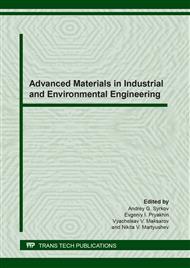p.57
p.64
p.74
p.80
p.87
p.97
p.103
p.109
p.117
Using Optical Activation to Create Hydrogen and Hydrogen-Containing Gas Sensors
Abstract:
It was found that at room temperature the value of the photoinduced current of Schottky diodes based on heterostructures InP/GaInAs/Pd at a hydrogen concentration of 0.03% is reduced by two orders of magnitude compared to the value without hydrogen. The value of the photoinduced current depends on the thickness of the depleted region on the surface of the semiconductor. A small change in the charged layer of H+ can cause a significant change in the thickness of this region and as a result, a strong change in the photoinduced current. This effect on current is much stronger than the influence of hydrogen concentration or capacitance without optical activation. As a result, it becomes possible to create hydrogen and hydrogen-containing gas sensors with much better sensitivity at room temperature. The original design of a miniature H2 sensor including an IR LED, a Schottky diode with a Pd contact, a Peltier cooler and a thermosensor is demonstrated.
Info:
Periodical:
Pages:
87-93
Citation:
Online since:
July 2020
Price:
Сopyright:
© 2020 Trans Tech Publications Ltd. All Rights Reserved
Share:
Citation:


